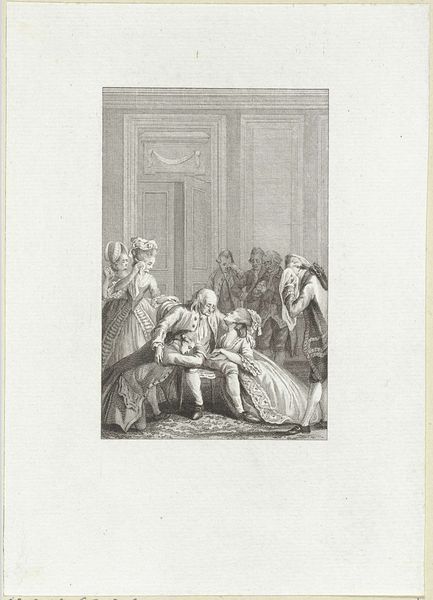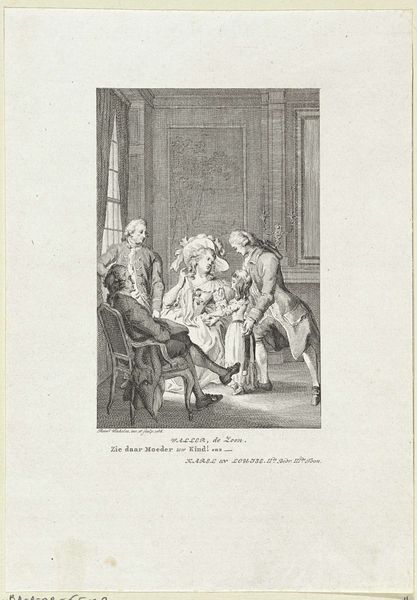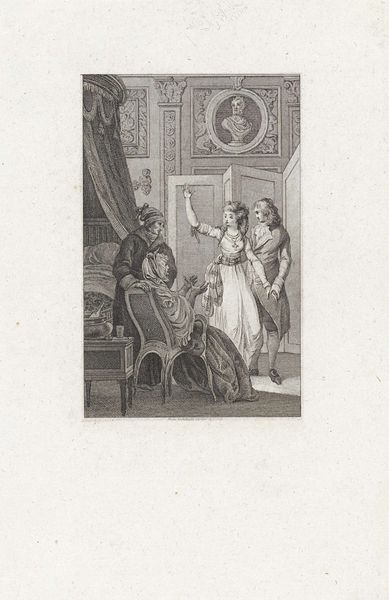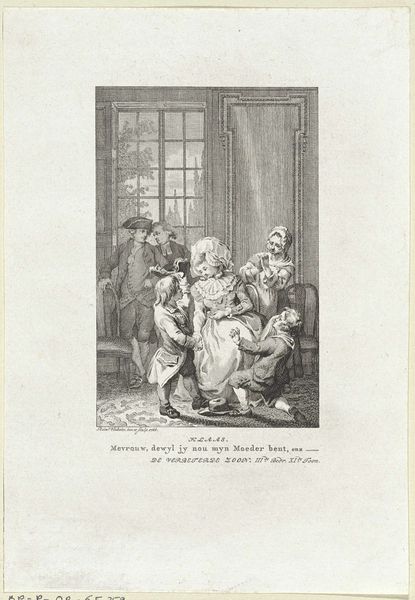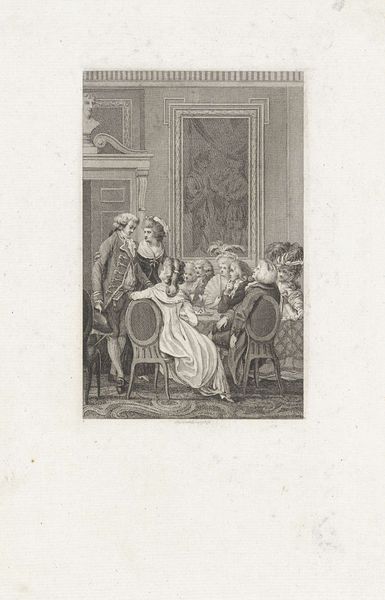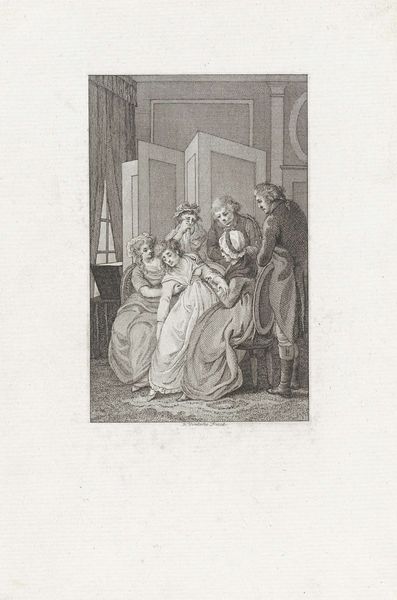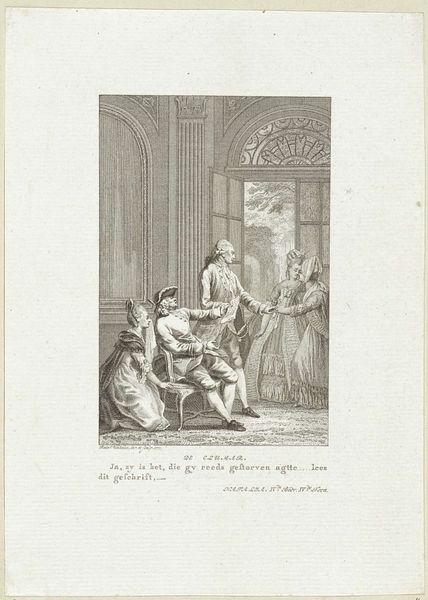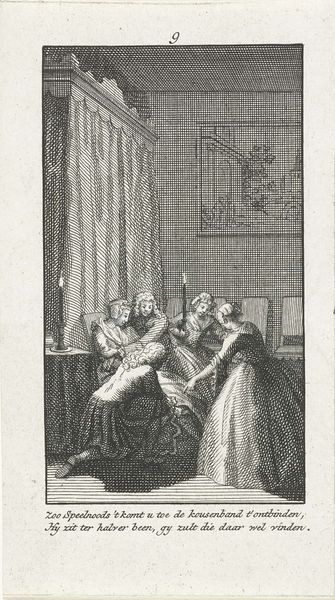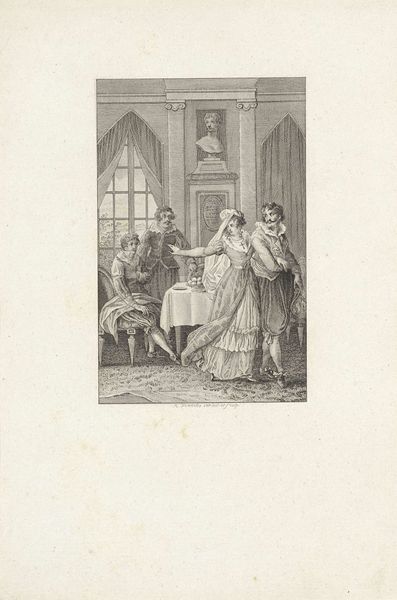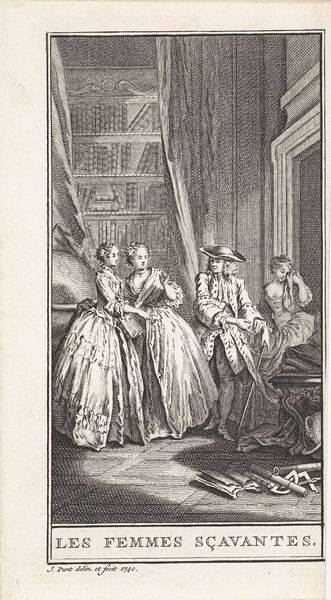
Dame raakt buiten bewustzijn tijdens het schrijven van een brief 1779
0:00
0:00
print, engraving
#
portrait
#
neoclacissism
#
ink paper printed
# print
#
figuration
#
line
#
genre-painting
#
history-painting
#
engraving
Dimensions: height 209 mm, width 149 mm
Copyright: Rijks Museum: Open Domain
Curator: What strikes me immediately is the precariousness captured in this engraving, the dramatic moment of collapse made still in meticulous detail. Editor: This is “Dame raakt buiten bewustzijn tijdens het schrijven van een brief,” or, “Lady Faints While Writing a Letter,” made in 1779 by Reinier Vinkeles. The medium is listed as engraving. Curator: The Neoclassical aesthetic is evident, from the formal interior setting to the crisp lines. The central figure, a woman swooning mid-letter, becomes a focal point within a larger narrative. Editor: Absolutely, look at the composition; Vinkeles has a tight control over light and shadow. It gives real definition to the subjects’ garments and, honestly, helps give weight to the drama that’s unfolding. Curator: Indeed, the engraving portrays a distinct gendered vulnerability. Women's health and emotional states were frequently pathologized and viewed as frail in the 18th century. This piece mirrors and reinforces that societal gaze. One could see the letter itself as a forbidden text. It transgresses the female boundaries of the time and leads to the physical manifestation of breakdown, what has been called, more recently, “hysteria.” Editor: And the linear precision enhances the tension, drawing our eye through each gesture. Notice the detail in the wallpaper pattern and the anxious onlookers. You can practically feel the stifling air in the room! Semiotics of illness and delicacy are interesting to interpret in this scene, which creates an overall mood and compositional unity through repeated vertical shapes in the door frame, and in the edges of furniture and garments. Curator: Certainly. What the image invokes in my reading is how female autonomy was constrained within prescribed roles, leading to literal or symbolic “fainting spells.” What a potent emblem for limited agency. Editor: From my perspective, beyond that thematic richness, the work remains incredibly efficient in using line and shadow to build mood and to move your eye around. Curator: A mood which can be understood in its time period’s gender and power relations. Editor: Yes, and an intriguing example of how those issues can also manifest as a question of composition. Curator: An interpretation I recognize as valid and valuable. Thank you. Editor: Thank you, too.
Comments
No comments
Be the first to comment and join the conversation on the ultimate creative platform.
